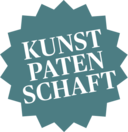Dolch: Langer Dolch
zwischen 1496 und 1506, Owner: König Philipp I. Sohn Maximilans I. von Habsburg
Langer Dolch
Note the elegantly curved hilt with its peaked roof-like pommel. Like the pommel, the guard is curved; on the side of the blade, it is mounted on wood and encased in a hexagonal, engraved, and gilded piece of sheet metal. The unusual shape of the hilt and the etched decoration at the base of the blade identify the dagger as the work of a Spanish swordsmith.
The etched decoration of roughly drawn garlands is closely related to that found on the blade of a contemporary rondel dagger that is also now in the Imperial Armoury (inv. A 55). The latter’s grip imitates knots on a tree trunk, while its striped decoration recalls the arms of Burgundy, a shield set with blue and gold bars (bendy azure and Or). On the basis of this symbolic reference to the Duchy of Burgundy and the stylistic similarities to Spanish art mentioned above, the two daggers have been attributed to Philip the Handsome, the first Habsburg on the throne of Castile (Spain).
Both the long dagger of Philip I and the rondel dagger mentioned above were originally in the collection assembled by Archduke Ferdinand II at Ambras Castle near Innsbruck. We do not know how these two weapons found their way there in the course of the sixteenth century. They may have been either mementos owned by Maximilian I or gifts presented to Ferdinand by Emperor Charles V or King Philip II of Spain.
Object data
Object Name
Dolch
Culture
Spanisch
Dated
zwischen 1496 und 1506
Owner
König Philipp I. Sohn Maximilans I. von Habsburg (1478 - 1506) - GND
Material
Klinge: Eisen, geschmiedet, teils geätzt. Ätzdekor: teils feuervergoldet, teils geschwärzt. Klingenschmiedstempel: Kupfertauschierung. Stichblatt: Eisenblech, teils feuervergoldet. Leder. Griff: Eisenblech, teils feuervergoldet, teils geätzt. Ätzdekor: teils feuervergoldet, teils geschwärzt. Holz. Knauf: Eisenblech, teils geätzt, teils feuervergoldet. Eisen, geschmiedet, feuervergoldet. Scheide: Holz, Leder. Ortband: Eisen, geschmiedet. Messer: Klinge: Eisen, geschmiedet. Griff: Holz. Pfriem: Klinge: Eisen, geschmiedet. Griff: Holz.
Dimensions
Schwert: L 88,5 cm x B 6,8 cm x T 6 cm, Gewicht: 0,85 kg
Scheide: L 72,8 cm x B 4,4 cm x T 2,5 cm
Messer: L 22,6 cm x B 1,9 cm x T 0,7 cm
Pfriem: L 19,8 cm x B 1,9 cm x T 0,6 cm
Markings
Klinge: einseitig ein Klingenschmiedstempel
Image rights
Kunsthistorisches Museum Wien, Hofjagd- und Rüstkammer
Inv. No.
Hofjagd- und Rüstkammer, A 428
Permalink (citable Link) to this page: www.khm.at/it/object/372825/
Kunst & Patenschaft
This object is still without a Art Patron. Accept the patronage and make sure that this cultural treasure is preserved for future generations.
Your donation is a direct and sustainable contribution to the scientific documentation, research, restoration, and presentation of the artworks of the Kunsthistorisches Museum Wien.

